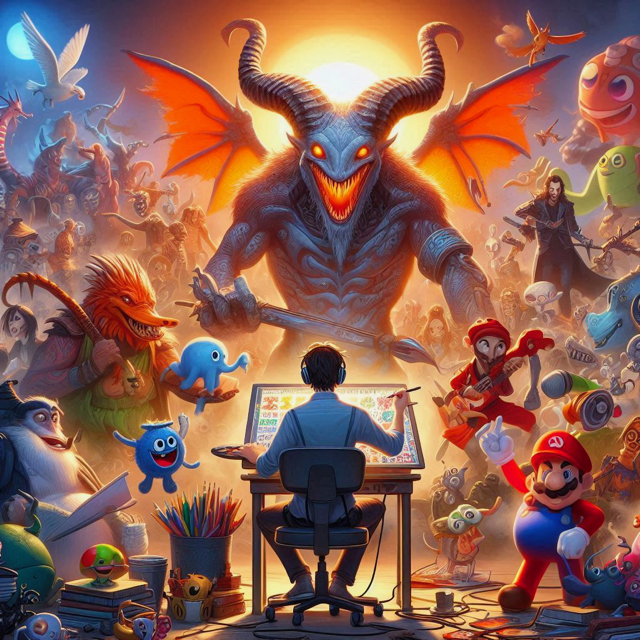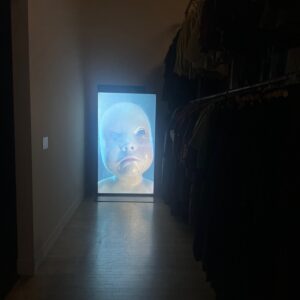
When it comes to the gaming industry, it’s easy to see how different skills and professions fit into the field and find ways to excel. Writers can shape game stories and narratives, craft game descriptions, and develop in-depth reviews (like this review of the Mr Beast casino app). Game developers bring the concepts, challenges, and characters to life with coding and software development. Composers add brilliance and polish that engage players, making the game feel far more intense and captivating.
Visual artists, too, can find their place in the gaming industry in more ways than expected. Video games are incredibly visual programs, and the quality of the graphics and design can make or break a gaming experience.
Without multi-skilled artists, the industry wouldn’t be the success it is today. Artists often play a role in game development from the earliest concept stages through to the final edits of the game and the marketing. Here, you’ll find nine ways artists can thrive in the gaming industry.
1. Game Designer
If you’re a highly creative problem solver who loves to develop big-picture concepts, the role of a video game designer may appeal to you and your creative strengths. Game designers are responsible for creating a game’s overarching concept and theme, game rules, structure, and technical aspects. It takes your raw artistic skills and finesses them into technical design skills. Depending on the size of the game designer’s company, the role can also include parts of level, environment, and story design, allowing the designer to further stretch their creative capabilities.
2. Concept Artist
While the big picture is an essential part of a video game, helping the player work through the different levels and know what they’re working towards, the smaller details are just as important. In the early stages of developing game concepts, themes, styles, and moods, concept artists are indispensable to the development and future creative process. Concept artists help form the framework from which the game’s future artistic needs will be built.
3. Game Artist
A game artist, also known as a game illustrator, applies their artistic skill set to create the visual elements of a video game based on the game concepts and design briefs. This role can include both 2D and 3D sketching and animation to capture the heart of the game being developed. Artists can help craft the environments, props, characters, weapons, or other game elements but often will niche down to a specific type of game art.
4. Character Artist
One of the critical area-specific artists in video game development is a character artist. This type of work can extend beyond the gaming industry into the film industry as it involves the 3D animation of a character. It consists of portraying a character’s quirks and unique qualities for consistency throughout gameplay.
5. Environment Artist
Just as character artists home in on the visual uniqueness of each character in a game, environment artists focus their efforts and skill on crafting the world in which characters will move through. These environments can change from level to level or challenge to challenge, but they need to have a cohesive style that clearly indicates each environment is part of the larger picture. Often, environment artists work with real-world references and are detail oriented as they need to include the smallest details, like the texture of sand or grass, and have the environment respond to character actions.
6. Asset Artist
Mixing visual arts and music, asset artists are responsible for all the small parts of a game that enhance the playing experience—like the sound of each movement to any furniture or objects a player might interact with. This type of role requires a vast skill base and serious organization. As game development progresses, so will the asset library, which asset artists are responsible for maintaining and distributing to others on the game development team.
7. Technical Artist
A technical artist combines creativity with technical know-how to work with a video game system’s software to ensure the game’s visual elements can be supported without losing their quality or detail in the final product. They can be thought of as translators between the technical and creative teams since they have the skills of each.
8. Gameplay Animator
The characters and elements are in motion when playing a video game, and gameplay animators craft these motions. Gameplay animators work with the algorithm of video games to shape how NPCs (non-player characters) interact with characters and how elements like cars move from frame to frame. Essentially, gameplay animators take all the carefully built art for a video game and give it movement. Sometimes, they even add their own artistic elements to the mix to ensure a seamless video reality.
9. Splash Artist
Staring at a blank screen as a game loads is far from ideal; it makes you question whether the game is working at all, detracting from the overall game experience. One way video game developers help make the loading experience more enjoyable is by creating loading screens with visual elements of the game. The people responsible for this are splash artists. Splash artists also create designs for marketing video games, packaging video games, and other materials that go into presenting and selling the final product.
Conclusion
Whether you’re a big-picture designer or a detail-oriented technical creator, there are many different places for you to thrive as an artist in the gaming industry that will support your big career aspirations and creative energies.







